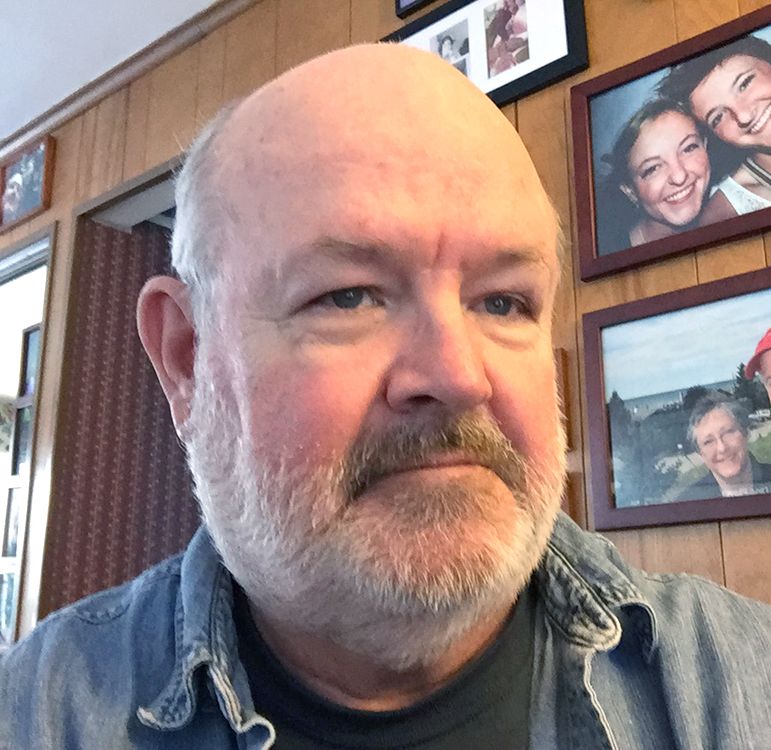Although a successful professional for more than three decades in Fort Wayne, Christopher Guerin never strayed far from his love of language, literature, and writing.
Having spent his childhood on the move as a self-described “Air Force brat,” Guerin lived in places as varied as the Wyoming, the Philippines, and Illinois. The latter was where he finally settled down enough to earn two degrees (a B.A. and an M.A.) in English literature at Northern Illinois University in DeKalb. Moving to Chicago to be with his future wife, the couple eventually moved to Colorado where Guerin spent six years with the Colorado Springs Symphony before moving to Fort Wayne in 1985 to accept a job as president of the Fort Wayne Philharmonic.
Yet through all of that, Guerin has always been a writer. He began writing short stories and poems while still in high school. He frequently had his stories published in small magazines, and while short fiction was his first love, increasingly his talents turned toward poetry, specifically sonnets.
“Sometime in the early 2000s I started writing all poetry,” he said. “Then in 2010 I got sick and missed a month of work after minor surgery that led to major complications. It was around that time that Blogger came along, so I started a blog and began posting my work there. Years ago I had been very disciplined about my writing. I would wake up at 7 a.m. and at 7:45 I would start writing until it was time to go to work. Then I lost that discipline and decided that I was going to start writing one sonnet a week every Saturday morning. I don’t stop until I have it done.”
What makes these sonnets unique is that they aren’t created in a vacuum. Each one is specifically connected to an image, most often a work of art, that he translates either literally or metaphorically in sonnet form. So far Guerin has written 416, the first 200 of which he recently published in a collection called My Human Disguise, available at Hyde Brothers and on Amazon. The collection was put together by a publisher who was able to work with the images that were available through public domain. Sadly, that meant many images were not included.
“It gets complicated when you’re putting together a book like this with text and images, and we weren’t able to publish the non-public domain images,” Guerin said. “It killed me that I couldn’t use M.C. Escher or Salvador Dali, but those weren’t available. It was also challenging to find images that would print clearly in the book. They might be good enough for the blog, but the file size made them blurry in book form.”
The book became a family affair with his wife Ruth and daughters Alice and Julia all contributing to the cover and typography. Guerin hopes that now that he has a physical copy of the book to send around, he can find a publisher who can do a more fully realized version of it, complete with images outside of the public domain.
Having recently retired from Sweetwater after more than a dozen years, where he served as Vice President of Corporate Communications, Guerin now works with several non-profits as a board member and continues his writing. That discipline hasn’t changed despite his altered professional responsibilities.
“During the week I’m always trying to come up with an image,” Guerin said. “I come at it from a couple of different ways. Sometimes I have an idea and think, ‘I want to write about that,’ and then go online to find an image that pertains to that. I have a lot of art books and search online for things all the time, and when I find that image I spend a couple of days thinking about it and then I write it on Saturday morning.
“I take a variety of approaches. Sometimes I try to put the image into words, verbalize the painting in some way. Sometimes the image is a launching point for a general meditation on something or a look at something that’s happening in current events. I didn’t used to do that, but I have done that more lately.”
Guerin’s use of sonnet form is a conscious move away from the more freeform poetry which has become favored in recent years. While he realizes that there has been a move away from formal, rhyming poetry, he doesn’t feel it’s as passé as some might suggest.
“I don’t believe, like a great many poets these days do, that formal poetry is dead.,” he said. “Rita Dove referred to it as ‘a bejeweled casket,’ which is a fancy way for saying that it holds dead things. It’s a colorful phrase, but I think it’s simply absurd.”
Guerin blames some of that attitude on the lengths that some poets go to in order to achieve the rhyme, noting that it often makes the result sound awkward and false.
“Many poets will destroy the syntax or the order of words to back into that rhyme, to change the way the line is written to accomplish the rhyme. And in the modern world that sounds wrong and out-of-date. It’s not the way we talk to each other. I struggle to make sure I never do that. My lines have to have a naturalness to them so it flows in a conversational way.”
In recent years, other artists have sought out Guerin’s work, and two of his poems were published in an international anthology last fall. And one of his sonnets was part of a dance performance for the Mikautadze Dance Theatre, when David Mikautadze asked for Guerin’s piece based on the Duchamp painting “Nude Descending a Staircase”: Mikautadze provided a musical spin, then his wife, dancer and choreographer Elizabeth, gave a dance interpretation. Being part of that merging of the arts was special for Guerin, whose plan for the future is to keep doing what he’s doing, generating one sonnet per Saturday.
“I plan to keep going until I have at least 600 for three volumes, which means I have a good two years of this ahead of me,” he said. “And I’m really focused now on finding a publisher for this first volume. It’s not going to be easy, and the odds are 100-1 that I’ll succeed. But I can’t do all of this work and not at least try to see it through.”
 Submit Your Event
Submit Your Event




